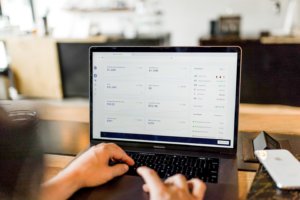
In a world marked by economic uncertainties and market volatility, investors are constantly on the lookout for stable and lucrative opportunities to safeguard their wealth. One such avenue that has stood the test of time is investing in precious metals. Precious metals, including gold, silver, platinum, and palladium, have been valued for their intrinsic worth and rarity throughout human history. They offer a unique blend of diversification, wealth preservation, and potential for growth in an investor’s portfolio. This comprehensive guide will delve into the world of investing in precious metals, providing valuable insights, considerations, and strategies for both novice and seasoned investors.
Understanding the Appeal of Precious Metals
Precious metals have an enduring allure that transcends cultural and economic shifts. Their intrinsic value is derived from their scarcity and the difficulty in extracting and refining them. Gold, often referred to as the “king of metals,” has been used as a store of value for centuries. Its rarity, coupled with its resistance to corrosion and decay, makes it a sought-after asset. Silver, on the other hand, is valued for its dual role as an industrial metal and a store of value. The surge in technological advancements has heightened the demand for silver in various sectors, further enhancing its investment potential. Whether you want to buy silver or gold, investing in precious metals is a solid investment option. But make sure to educate yourself before embarking on the journey.
Diversification: Hedging Against Volatility
One of the primary reasons investors turn to precious metals is for diversification. Precious metals tend to have a low correlation with traditional financial assets such as stocks and bonds. This means that when these traditional assets experience downturns, the value of precious metals may remain relatively stable or even increase. Including precious metals in a diversified portfolio can help mitigate the impact of market volatility, providing a cushion for investors during turbulent times.
Preserving Wealth for the Long Term
Investing in precious metals can serve as a hedge against inflation and currency devaluation. Unlike paper currencies, which can be printed in unlimited quantities, precious metals have a finite supply. As a result, they tend to retain their value over time. History has shown that during periods of hyperinflation or economic crisis, precious metals have often acted as a safe haven for investors seeking to preserve their wealth.

Exploring Different Types of Precious Metals
When considering an investment in precious metals, it’s crucial to understand the distinctions between the various types available. Gold, as the most well-known and widely traded precious metal, is often seen as a store of value and a hedge against economic uncertainty. Silver, with its industrial applications, offers a unique blend of investment potential and practical use. Platinum and palladium, though less mainstream, have their own roles to play – platinum in the automotive and jewelry industries, and palladium primarily in catalytic converters for vehicles. Each metal comes with its own set of supply and demand dynamics, which can influence its price trajectory.
Forms of Investment: Bars, Coins, and Funds
Investors interested in precious metals have several options to choose from when it comes to acquiring these assets. Physical forms include bars and coins, which offer tangible and private means of ownership. Bars are typically available in varying weights and are favored by those looking to make larger investments. Coins, on the other hand, are not only valued for their metal content but also for their historical and aesthetic appeal. Bullion coins issued by government mints are particularly popular among investors. Additionally, exchange-traded funds (ETFs) and mutual funds provide exposure to precious metals without the need for physical ownership. These funds often track the price of the metals and can be bought and sold on stock exchanges.
Factors Influencing Precious Metal Prices
Understanding the factors that drive the prices of precious metals is essential for making informed investment decisions. Demand and supply dynamics play a significant role. Economic growth, geopolitical tensions, and central bank policies can all impact the demand for and supply of precious metals. For instance, during times of economic uncertainty, investors tend to flock to safe-haven assets like gold, driving up its price. Moreover, mining production levels, technological advancements, and shifts in industrial demand can influence the supply side of the equation. Staying attuned to these factors can aid investors in predicting price movements and timing their entry and exit strategies.
In the intricate world of investment, precious metals stand as enduring assets that offer stability, diversification, and a hedge against economic uncertainties. Their timeless allure, coupled with their ability to preserve wealth over the long term, makes them a valuable addition to any investor’s portfolio. Whether seeking to protect assets from market volatility, hedge against inflation, or simply diversify holdings, the various types of precious metals – from gold to platinum – provide a range of options to suit different investment goals and risk appetites. By understanding the factors that influence their prices and the different forms of investment available, investors can make well-informed decisions that align with their financial aspirations. As with any investment, careful research, due diligence, and a long-term perspective are key to successful investing in precious metals.




